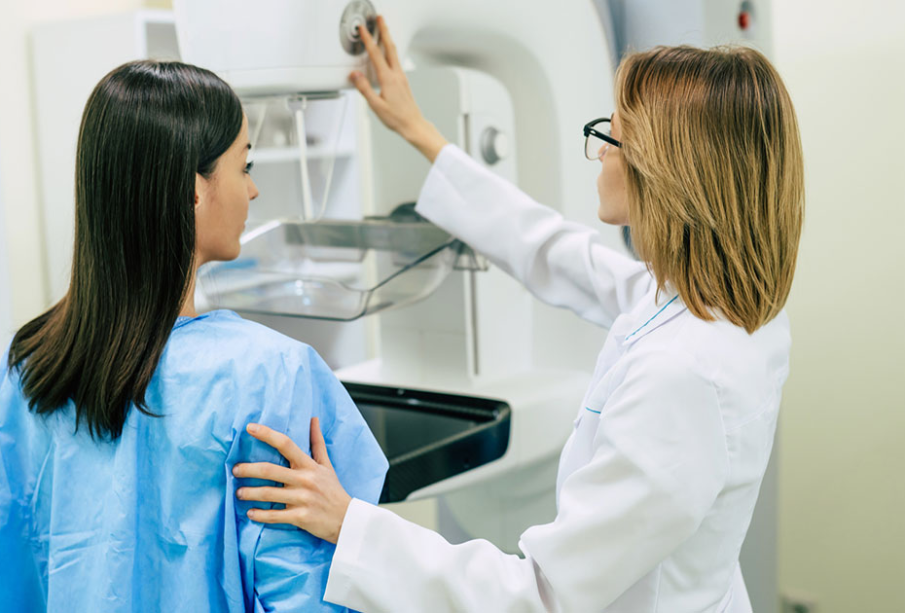Digital Mammography is the Most Helpful Tool to Prevent and Detect Breast Cancer.

Breast cancer affects one in eight women. The causes of its development are still under study, but there are several risk factors such as genetics or a sedentary lifestyle.
Although it is a topic that is often frightening, experts recommend having an annual checkup and mammograms every two or three years, especially for all women between 30 and 60 years old.
The main symptoms of breast cancer
Although in many cases, this type of cancerous tumour does not present symptoms or apparent signs in the first diagnosis, it should be taken into account that unusual changes in the breasts and the woman’s body may be the primary triggers of it.
The first step is a self-examination of the breasts, which should do periodically at home. If you notice any changes or abnormalities, you should go to a specialist to perform the appropriate diagnostic tests.
Some of the most common symptoms in women who have breast cancer are:
- Lumps in the breast or armpit area
- Increased thickness and swelling of the breasts
- Irritations in the breasts
- The sinking of the nipple and severe pain in that area
- Changes in the size and firmness of the breasts
- Discharge through the nipple.
Types of breast cancer that exist
Breast cancer is probably the malignant tumour that resonates the most in everyday society. Around 32,000 women are diagnosed with breast cancer in Spain each year with this tumour, better known in medicine as breast carcinoma.
It is caused by the uncontrolled multiplication of cancer cells through organs and tissues near the breasts or distant areas.
The types of breast cancer can be divided into two:
Ductal carcinomas: This type of tumour originates in the cells that line the breast ducts, that is, the pathways through which milk is transported from the breast lobes to the nipple. It is the most frequent type.
Lobular carcinomas: originate in the cells of the mammary lobules, the area in which breast milk is generated. Fewer cases of this type of carcinoma are recorded, around 10%.
Other forms in which breast cancer can appear are sarcomas in the breast, that is, cancer originating in the white tissues and blood vessels, or Paget’s disease of the breast, which manifests as an eczematous lesion on the nipple.
Breast pathologies detectable with a tomosynthesis mammogram
The nodules or solid tissues appear as a lump in the breast, but they do not have to be cancerous or malignant. We can differentiate two types:
Benign breast nodules: They usually produce symptoms such as inflammation associated with the menstrual cycle, cysts, mastitis, intraductal papillomas or ductal ectasia.
Malignant breast nodules: This category includes breast cancer, Paget’s disease of the nipple, or phyllodes tumours.
Fibroadenoma is the most common type of benign tumour in women under 30 years of age, and it usually shrinks with menopause.
Depending on the evolution, it must be removed if it grows too much, or it will be left without treatment if it remains, and even reduces, by itself.
Digital mammography with tomosynthesis to detect breast cancer
A mammogram is a specific imaging test that uses low-intensity x-rays to detect cancer before symptoms occur.
What is a mammogram for?
Although they do not prevent breast cancer, mammograms can save lives because if cancer is found early, it is easier to treat.
Tomosynthesis is a technology that mixes traditional 2D mammography and the new way of obtaining 3D images, which are much more precise when determining the size, location and extent of diseases.
Mammograms are an indicated screening tool for women who do not have symptoms. They help diagnose and detect breast diseases in women with symptoms such as pain, lumps or dimpling of the skin. In women, breast cancer is caused by a genetic anomaly or by the natural wear and tear of the breast itself. In very few cases, it derives from a hereditary abnormality.
Although like women, men have breast tissue, breast cancer in men is rare, as female hormones stimulate the breast tissue to fully develop breasts, while this tissue remains smooth and small in the body of men.
The possibility of enlargement in the chest of men is usually caused by mounds of fat or by an actual increase after taking medications with hormones or at a high level of them.
When should you have a digital mammogram in Madrid?
Although there is no fixed period, experts recommend that women over 40 have at least one mammogram yearly. This age is advanced to 30 years in cases with a family history. If you have doubts about when you should start performing breast examinations, it is best to consult with your doctor.
Reasons to perform breast examinations in Madrid.
Screening makes it possible to detect small tumours that are not yet palpable. It consists of performing mammograms every two years, and it is an early detection program recommended for women between 50 and 69 years since it is the age period in which it is most effective.
The earlier breast cancer is detected, the more and often less aggressive therapeutic options are available. Screening with mammography increases the chances of cure for those tumours noticed early.
Consult with your specialist doctor about the time that should pass between revision and revision, and rest assured, since you will be in the best hands at each step of the process.
Other diagnostic tests for breast cancer in Madrid
Although mammography is the most common diagnostic test for the detection of pathology of this muscle, there are other tests, which are performed periodically, that will also help find any abnormality.
Core needle biopsy to detect breast pathologies
The CNB of the breast is the most common type of breast biopsy performed today and consists of inserting a thick needle under ultrasound guidance. A thin cylinder of tissue will be extracted from this test and must be analysed by the pathologist.
It is a minimally invasive procedure performed under local anaesthesia to minimise discomfort.
Breast cancer detection with breast ultrasound
Although it may, at first glance, appear to be the same test as a mammogram, breast ultrasound is a complementary study that is performed to obtain even more reliable diagnoses.
Both tests are usually recommended if the breast tissue is of high density, thus ensuring a better interior view.
In the case of pregnant women, it is recommended to perform only a breast ultrasound since it is a less invasive test with less risk for the baby since it uses ultrasound technology instead of x-rays.
Self-examination for early detection of breast cancer
In addition to these diagnostic tests, there are straightforward guidelines that can help detect abnormalities in the breast.
In the first place, the observation of the breasts, in case of inflammation, alterations in the nipple area or deformations, it is advisable to go to the gynaecologist.
Second, regular breast self-examination. From the armpits and using circular movements, the breasts should be explored entirely to rule out the presence of lumps or alterations.
For all the reasons explained throughout the post, it is vitally essential to carry out early breast studies in case of noticing any anomaly, always in the hands of specialists and under the supervision of the medical personnel you trust.
















